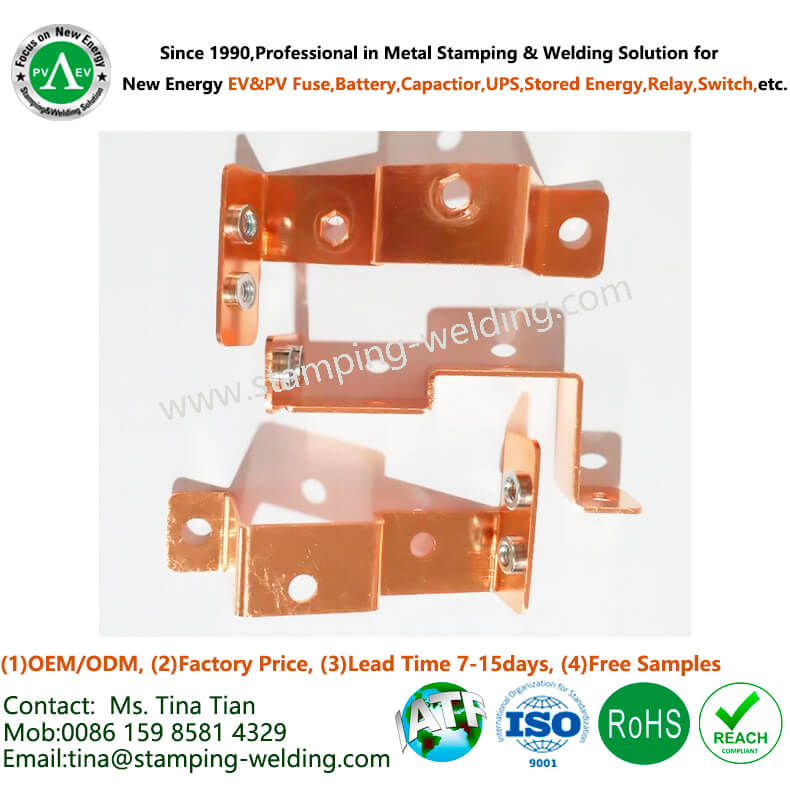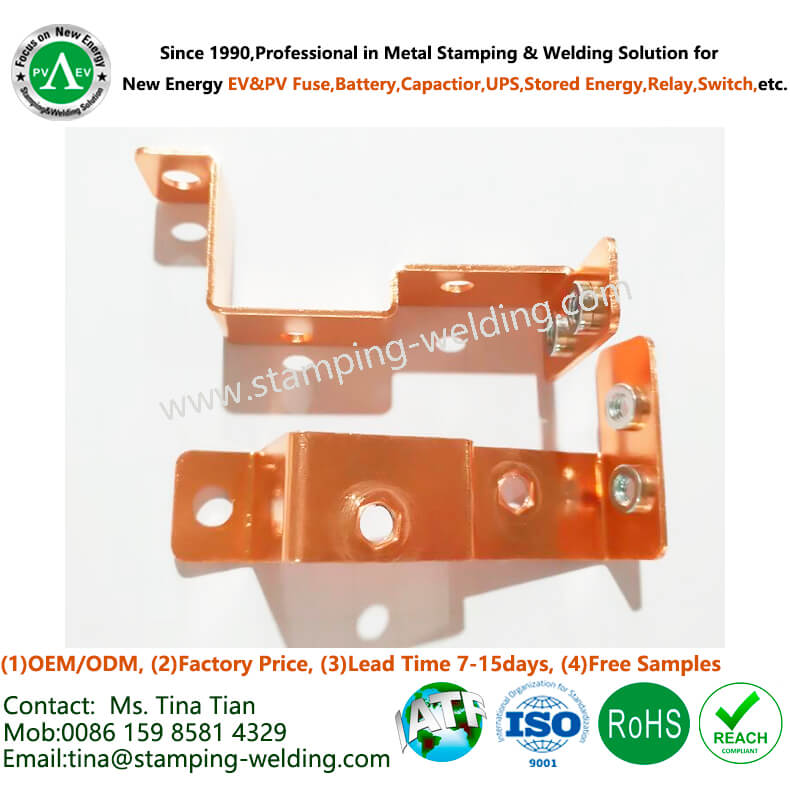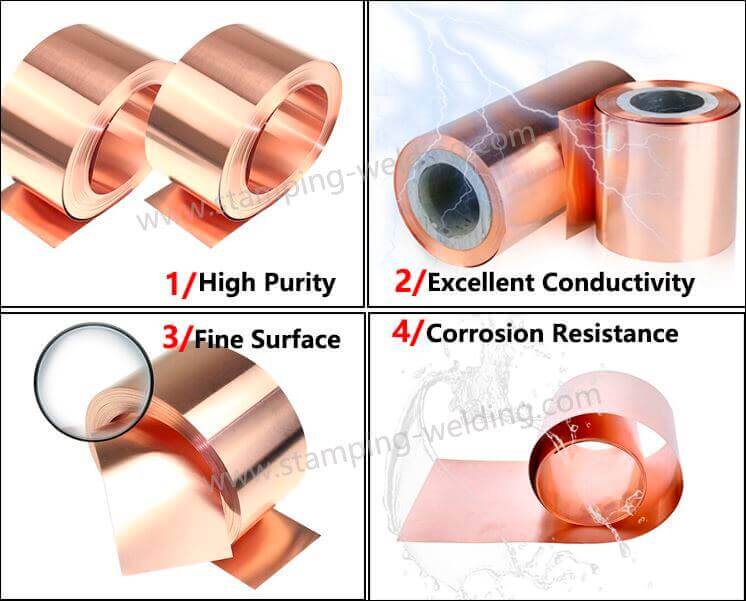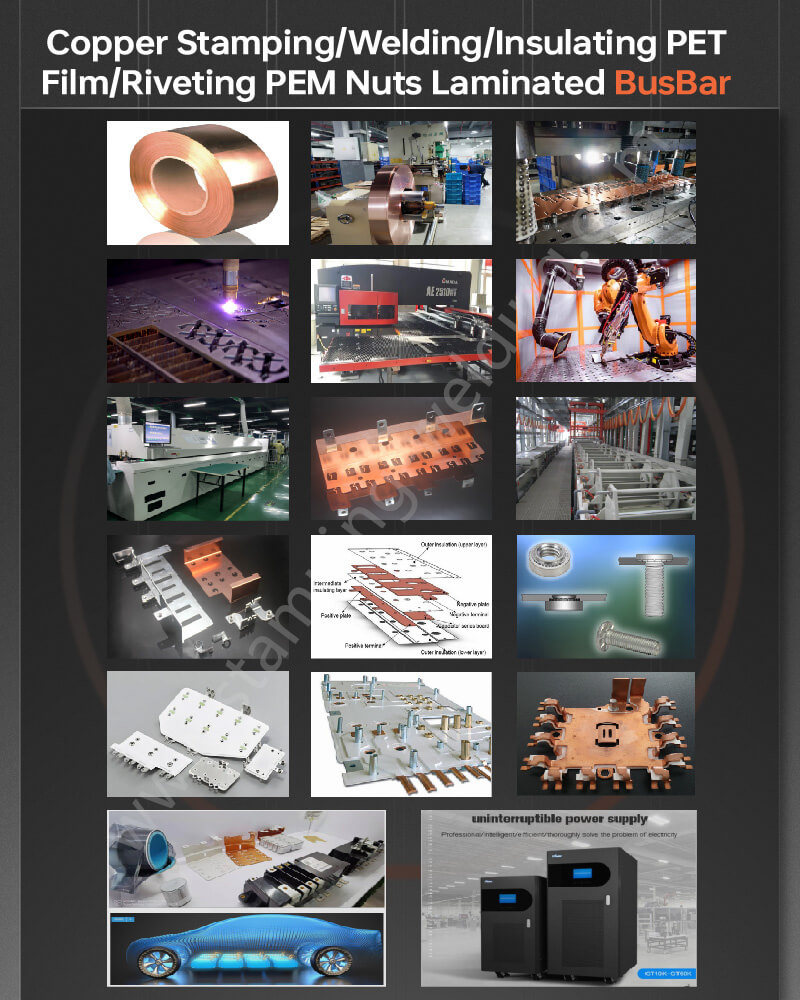

1- Products Name: Bare BusBar Electrical
2- Base Material Standard:
GB : T2Y2 Copper
DIN: E-Cu58 (Number: 2.0065)
EN: Cu-ETP ( Number: CW004A)
ISO: Cu-ETP
UNS: C11000
JIS: C1100
BS: C101
Purity ≥99.99% Copper, Conductivity %IACS≥97, Hardness 80~110HV, Tensile Strength 245-345MPa, other material also can be customized.
3-Surface Treatments:
(3.1) Silver plating
(3.2) Tin plating
(3.3) Nickel plating
(3.4) Ultrasonic cleaning
Normally plated thickness is 3μm to 12μm, but all upon customers' request.
4- Insulation Options:
(4.1) PET insulation paper (brands USA GTS, GERMANY KREMPEL, etc with white or milky white colors)
(4.2) PVC dipping (orange and green are the most popular colors)
(4.3) Epoxy powder coating (orange, green and grey are the most popular colors)
(4.4) PE heat shrink tube (orange, green, black, red are yellow are the most popular colors)
Flame Retardant / Fire Resistance: UL94-V-0 or upon you request;
Operating Temperature: -45ºC to +150 ºC
5- Copper Busbar Resistance: ≤0.00001Ω
6- Copper Busbar load voltage 3500VDC to 5000VDC and current 100A to 2000A
7- Copper Busbar Assembly Fixtures: USA PEM stainless nuts, studs, standoffs, screws, etc
8- Free Samples:1-10pcs is allowed
9- Lead Time:Orders 7-10days,Samples 10-20days(including the tooling/die production of Copper Stamped Part);
10- Packing: pearl cotton/blister box inside and carton/pallet outside
11- Certifications: ISO9001, IATF16949, RoHS, REACH, etc.
12- Production Capacity: 50,000,000 pcs/month
13- Applications: film capacitors for new energy electric vehicles and hybrid vehicles, new energy vehicle battery packs, new energy photovoltaic energy storage, power appliances, distribution cabinets, rail transit, cloud server uninterruptible power supplies and other power systems.


"Bare bus bars" in the context of new energy, often associated with renewable energy sources and technologies, typically refer to exposed, uninsulated bus bars used in electrical systems related to these energy sources. Here are some aspects and applications of bare bus bars in the context of new energy:
1-Renewable Energy Systems:
Solar Power Plants: Bare bus bars may be used in solar power plants to connect and distribute electrical power generated by solar panels. They play a role in transmitting the generated electricity to inverters or other components within the system.
Wind Farms: In wind farms, bare bus bars can be employed to interconnect wind turbines and facilitate the transmission of electrical power generated by the turbines.
Hydropower Stations: In hydropower stations, bare bus bars may be part of the electrical infrastructure for transmitting power generated by water turbines.
2-Energy Storage Systems:
Battery Energy Storage: Bare bus bars may be used in energy storage systems, such as battery storage facilities. They can facilitate the connection and distribution of stored electrical energy.
3-Electric Vehicle (EV) Charging Infrastructure:
Charging Stations: In electric vehicle charging stations, bare bus bars may be used for power distribution within the charging infrastructure. They play a role in transmitting electricity from the grid to charging units.
4-Microgrids:
Local Power Distribution: In microgrid systems, which often incorporate renewable energy sources, bare bus bars can be used for local power distribution within the microgrid.
5-Power Electronics:
Inverters and Converters: Inverters and converters that are part of renewable energy systems or energy storage systems may utilize bare bus bars for electrical connections and distribution.
6-Electrical Substations:
Interconnecting Components: Bare bus bars can be used in electrical substations associated with new energy projects. They help interconnect various components and ensure efficient power transmission.
7-Custom Applications:
Customized System Designs: Depending on the specific requirements of a new energy project, bare bus bars may be incorporated into custom-designed electrical systems. Custom solutions could be tailored to the needs of the application.
It's important to note that the term "bare bus bars" indicates that these bus bars are not insulated or covered with additional protective layers. The decision to use bare bus bars in new energy applications is influenced by factors such as electrical conductivity, cost-effectiveness, and the specific environmental conditions of the installation.
As with any electrical components, safety considerations, and adherence to relevant standards and regulations are crucial. Additionally, periodic inspections and maintenance are important to ensure the continued reliability and performance of the electrical systems involving bare bus bars.


Contact Information:
Ms.Tina Tian (Sales Manager&Technology Engineer)
Xiamen Apollo Stamping Welding Technology Co., Ltd
Apollo Electronic Components (Xiamen) Co.,Ltd
Add: No.2, Chengyi North Road, Jimei Software Park, Jimei District, Xiamen City, Fujian Province, China, 361022
Mob/WhatsApp/WeChat: 0086-15985814329
Email: tina@stamping-welding.com
Web: www.stamping-welding.com , www.china-electronic-components.com
Since 2010, professional in Metal Stamping & Welding Solutions for New Energy EV & PV Fuse, Battery, Capactior, Relay, Switch, ect!